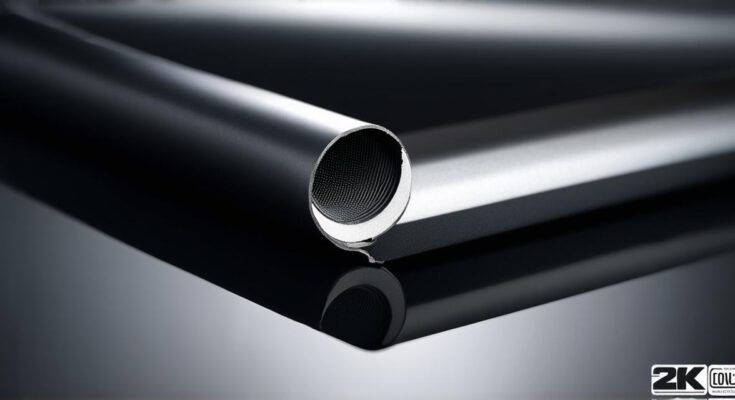Monovette tubes, also known as glass vials or beakers, are versatile laboratory equipment used for storing liquids, conducting experiments, and observing chemical reactions. The availability of different colors of Monovette tubes can greatly impact the outcome of certain experiments, and it is essential to choose the right color based on the type of solution being stored or analyzed.
Types of Monovette Tubes
Monovette tubes come in various sizes, shapes, and colors. The most commonly used sizes are 100 mL, 250 mL, and 500 mL. The shape of Monovette tubes can be round or cylindrical, with the walls being either thick or thin.
The main colors available for Monovette tubes are:
- Clear glass
- Dark glass
- Transparent glass
- Brown glass
- Blue glass
- Green glass
- White glass
Clear glass is the most commonly used type of Monovette tube. It is transparent and allows light to pass through, making it ideal for observing chemical reactions and analyzing solutions. However, clear glass can be easily contaminated by dust and other particles in the air, which may affect the results of your experiments.
Dark glass, on the other hand, absorbs light and blocks it from passing through the tube. It is commonly used to store corrosive liquids and solutions that are sensitive to light, as it provides extra protection. However, dark glass can be difficult to use when conducting experiments that require observation of chemical reactions or analyzing samples.
Transparent glass is similar to clear glass in terms of its properties. However, it has a tint, which makes it less transparent than clear glass. Transparent glass is commonly used to observe solutions with low absorption spectra, such as those used in spectroscopy experiments.
Brown glass, also known as amber glass, is often used to store liquids that are sensitive to light. It absorbs harmful UV radiation and protects the contents of the tube from photo-degradation and other forms of light damage. Brown glass is commonly used in cryptogames to store cryptocurrencies and other valuable digital assets.
Blue glass, green glass, and white glass are less common types of Monovette tubes and are mainly used for aesthetic purposes. Blue glass, for instance, is often used for decorative purposes and can be found in various designs and patterns. Green glass is commonly used to create a unique and vibrant appearance, while white glass is often used for decorating glassware or creating custom designs.
Applications of Monovette Tubes in Cryptogames
Monovette tubes have various applications in cryptogames, depending on their color and size. Here are some examples:
- Clear glass Monovette tubes are commonly used to store cryptocurrencies and other valuable digital assets. They allow for easy observation of the contents of the tube, making it easy to monitor changes in the value of your cryptocurrency over time.
- Transparent glass Monovette tubes are often used in spectroscopy experiments that involve analyzing solutions with low absorption spectra. This is particularly useful in cryptogames where it is important to analyze the properties of digital assets, such as their market capitalization and trading volume.
- Dark glass Monovette tubes are commonly used to store corrosive liquids and solutions that are sensitive to light. In cryptogames, this can be useful for storing valuable digital assets that may be affected by exposure to light or other forms of radiation.
- Brown glass Monovette tubes are often used to store liquids that are sensitive to light, such as cryptocurrencies and other valuable digital assets. They provide extra protection from light damage and can be useful in cryptogames where it is important to protect your digital assets from potential harm.
Selecting the Right Color for Your Monovette Tube
When selecting a color for your Monovette tube, it is essential to consider the type of liquid or solution you will be storing and analyzing. Here are some factors to consider:
- If you need to observe chemical reactions or analyze samples, choose clear glass or transparent glass Monovette tubes. These types of glasses allow for easy observation of the contents of the tube, making them ideal for conducting experiments.
- If you need to store corrosive liquids or solutions that are sensitive to light, choose dark glass Monovette tubes. They provide extra protection and can be useful in cryptogames where it is important to protect your digital assets from potential harm.
- If you need to store liquids that are sensitive to light, such as cryptocurrencies and other valuable digital assets, choose brown glass Monovette tubes. They absorb harmful UV radiation and provide extra protection for the contents of the tube.
Caring for Your Monovette Tubes
Proper care and maintenance are essential to ensure that your Monovette tubes last as long as possible. Here are some tips for caring for your Monovette tubes:
- Avoid exposing your Monovette tubes to direct sunlight or other forms of radiation, as this can cause the glass to degrade over time and affect its clarity.
- Use a soft cloth or sponge to clean your Monovette tubes, avoiding harsh chemicals that can damage the glass.
- Store your Monovette tubes in a cool, dry place to prevent moisture from damaging the glass.
- Avoid stacking heavy objects on top of your Monovette tubes, as this can cause the glass to crack or break.
FAQs
Q: Can I use Monovette tubes for storing cryptocurrencies and other valuable digital assets?
A: Yes, clear glass or brown glass Monovette tubes are commonly used to store cryptocurrencies and other valuable digital assets. However, it is essential to consider the sensitivity of your digital asset to light and take appropriate measures to protect it from potential harm.
Q: What are the different types of Monovette tubes available in the market?
A: The main colors available for Monovette tubes are clear glass, dark glass, transparent glass, brown glass, blue glass, green glass, and white glass.
Q: How do I select the appropriate color for my specific needs?
A: When selecting a color for your Monovette tube, it is essential to consider the type of liquid or solution you will be storing and analyzing. Clear glass or transparent glass are ideal for observing chemical reactions, while dark glass is useful for storing corrosive liquids, and brown glass provides extra protection from light damage.
Q: How do I properly care for my Monovette tubes?
A: Proper care and maintenance, such as avoiding direct sunlight or harsh chemicals, storing in a cool, dry place, and avoiding stacking heavy objects, are essential to ensure that your Monovette tubes last as long as possible.



